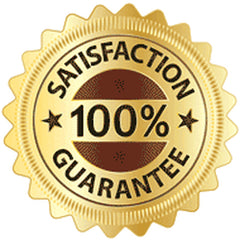Chat with us online
New to ZimSeller? Get 10% Off with Code: WELCOME
Currency






Description
x| Paracetamol | 450 mg |
| Codeine phosphate | 10 mg |
| Doxylamine succinate | 5 mg |
| Caffeine alkaloid | 50 mg |
| Nipastat (preservative) | 0,124% m/m |
| 1. | Consult your doctor if no relief is obtained with the recommended dosage. |
| 2. | Do not use continuously for longer than ten days without consulting your doctor. |
| 3. | Store in a safe place, out of reach of children. |
| 4. | Patients suffering from liver or kidney disease should take paracetamol under medical supervision. |
Additional Information
xThis product is shipped directly from South Africa. Please note that you may be charged customs duties and taxes for products purchased from ZimSeller for the following reasons.
- Exclusive Product Price:
- The price of goods you purchase from ZimSeller does not include customs duties or taxes. These charges are also not part of the shipping costs you pay at checkout on our website.
- Shipping Origin:
- All products sold by ZimSeller are shipped from South Africa. As these goods do not originate in your country, they may be subject to customs duties, which are tariffs or taxes imposed on goods transported across international borders.
- Customs Union Zone:
- When products are not shipped domestically or within a customs union (e.g., the European Union), you are responsible for paying any inbound duties and taxes deemed appropriate by your local customs authority.
- Prepaid Duties:
- To ensure timely delivery of your goods after they arrive in your country or customs union, couriers often pay customs duties and taxes on your behalf. The goods are delivered to you once these charges are repaid to the courier.
- Calculation Method:
- The amount of duty payable, if any, is determined by your local customs authority. It depends on factors such as the type of goods, their transactional value, and the package weight.
What we recommend
Before making a purchase on ZimSeller, always check with your local customs authority to confirm:
- Whether the products are legal to import into your country.
- If duties will be charged on the goods, and if so, how much.
- Whether the products can be imported from outside your customs union zone.
Payment Options
xPayment Options
We provide a range of secure and convenient payment methods to accommodate your preferences.
Card Payments Online
Pay effortlessly using major credit and debit cards, including Visa and MasterCard, through our secure online gateway.
Manual Payment Options
Bank Transfer: Transfer funds directly into our South African bank account (Standard Bank or FNB). Contact us to obtain our bank details.
Western Union: Make payments from anywhere in the world via Western Union. Reach out to us for recipient details.
MoneyGram: Send payments globally via MoneyGram. Contact us for the necessary recipient information.
Select the payment method that suits you best and shop confidently with ZimSeller Pharmacy!
Important Note
We regret to inform you that PayPal payments are no longer accepted, as PayPal has ceased working with online pharmacies.
Health Disclaimer
x| Our Intention | The information provided on ZimSeller is intended for general informational purposes only. It should not be considered a substitute for professional medical advice, diagnosis, or treatment. |
| Consult Healthcare Professionals | Always consult a qualified healthcare professional before using any product, especially if you are pregnant, nursing, taking medication, or have a pre-existing medical condition. A professional evaluation ensures the product is suitable for your individual needs. |
| Product Purpose | The products sold on ZimSeller are not intended to diagnose, treat, cure, or prevent any disease. They are provided as over-the-counter options to support general health and wellness. |
| Individual Results | Individual results may vary based on factors such as age, health status, and how the product is used. Effectiveness cannot be guaranteed for everyone. |
| Usage Guidelines | It is important to carefully read all product labels, warnings, and directions before use. Adhering to the provided guidelines ensures safe and effective use of the product. |
| Adverse Reactions | In the event of an adverse reaction, discontinue use immediately and consult a healthcare provider. Your safety is our priority, and we encourage reporting any concerns for further assistance. Would you like additional customization or branding elements added to these headings? |
- Choosing a selection results in a full page refresh.






